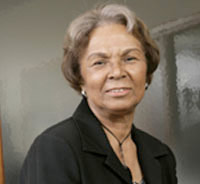
A 2014 study by the international Labour Organization (ILO) indicated that Jamaica has the highest percentage of women managers globally. In Women in Business and Management, the ILO reported that just under 60 percent of managers in the country are women.
The status of women on the island is relatively high in politics as well. Portia Simpson Miller was Prime Minister from 2012-2016 after serving a brief stint from 2006-2007. Women have held other senior government cabinet positions in foreign affairs, health, education, labor, social services and sports, among others.
Several factors may account for this high percentage of women in business, the professions and politics. Since 2000, Jamaica has ranked in the top five in global indexes for college and university gender parity. In a 2014/2015 statistical review by the University of the West Indies, of the 14,846 Jamaicans enrolled at the three main campuses in Jamaica, Trinidad and Barbados, 9,945 or 67 percent were females. At the Jamaica campus at Mona, of the 4,999 students enrolled in the social sciences, which include management programs, 3,281 or 66 percent were women; of the 3,663 in the medical sciences, 2,669 or 73 percent were women; of the 512 in law, 377 or 74 percent were females.
All this is added to traditional professional caring roles such as nursing, teaching and social work, which are dominated by women.
That Jamaican women are well represented in business management did not happen by chance. At least three key decisions in the 1970s laid the foundation for the advancement of women in education, in management and the professions. In 1974, Prime Minister Michael Manley first proposed and began the process of providing free education to all Jamaicans, from primary school through to college and university. This opened college and university education to swaths of the population previously excluded.

The Employment (Equal Pay For Men And Women) Act of 1975 stipulates that all persons, regardless of gender, should get equal pay for equal work. Furthermore, “no employer shall dismiss or otherwise discriminate against any person because that person has made a complaint or given evidence or assisted in any way in respect of the initiation or prosecution of a complaint or other proceeding under this Act.” In other words, clear provisions are made to enforce the law.
The Maternity Leave Act of 1979 provides for women to be paid, for at least eight weeks, “the normal wages earned in respect of the last normal working week during which she worked” prior to going off on maternity leave. She may take an extra four weeks no-pay leave without fear of losing her position or benefits upon returning to her job. Strict enforcement is provided in case of violations.
The combination of increased access to education, equality in pay and other forms of compensation, and the security of keeping one’s job after pregnancy, helped women to advance.
Long journey
It took Jamaican women a long while to get where they are. Women have always had to work, but the jobs they did were mainly menial. Someone once said the discussion about women working is a white woman’s discussion, because black women always worked outside their homes. In slave societies in the Americas – North, Central and South America, including the Caribbean – women were forced to work in the fields, factories, and in the masters’ and mistresses’ homes, without compensation and at the abuse of their bodies.

Jamaican women blanch at the very idea of going back to that dark past. In April 1981, one minister of government in Jamaica proposed, as a solution to unemployment in the country, the hiring of women breaking rocks. The country’s women, middle class women in particular, were outraged. The proposal was quickly withdrawn and died a natural death. That unfortunate minister of government, who had gone on to create a monstrosity of a chaotic transportation system in the country, was harking back to the days when breaking rocks was indeed a source of employment for Jamaican rural women.
Alfred Leader, who published Through Jamaica with a Kodak in 1907 after visiting the island, wrote:
In all directions here are to be seen native women, engaged in the hard, rough work of the island. Women repair the public roads, break stones on the roadside, and in other ways are employed for work which (as it seems to an Englishman) ought to be done by men only.
He referred to “seeing so many women engaged in coaling steamers, loading them with bunches of bananas, breaking stones on the roads, and other similar employment.” He observed:
One constantly meets the native women bearing heavy loads (garden produce, logwood, etc.), in baskets or bundles upon their heads. They run these huge weights mile after mile along the country roads at a great pace, their swinging skirts and upright carriage (the latter due to this practice of weight-carrying upon their heads from early childhood) being quite remarkable. Some of these burden-bearers are tall, graceful women, almost queenly in their bearing.

He saw “a native woman, trampling along, with a single heavy bunch upon her head, having brought her burden from her half acre many miles away.”
Women worked on the shipping docks just as men did. He saw that, “immediately on arrival of the steamer, the fruit is run by negroes (women chiefly) into large boats built for the purpose, and conveyed by these to the vessel lying at anchor in the harbor,” a phenomenon he witnessed in Kingston, Port Antonio and Port Morant.
It is clear. Women in Jamaica have made significant progress. The ground was laid in the 1970s, the fruits began to be seen in the 1980s, and the pace took off at a fast clip in the 1990s.
Despite such advances however, one could argue that the percentage of women in leadership is lagging. Management figures are 6 percent to 14 percent lower than the number of women with university degrees in the broader population.
And if tertiary education is important in the preparation for political leadership, there should be far more women in the nation’s parliament and in the government cabinet. Of the 21 senators, only five or 24 percent are women. Only 11 or 17 percent of the 63 members of parliament are women. Ministers of government, which number 21, includes only four or 19 percent who are women.
While there is much to celebrate, there is yet need for even greater equity. For instance, in the UWI Statistical Review For The Academic Year 2009/2010, only about 28 percent of fully tenured professors and 31 percent of senior lecturers were women. Women lecturers outnumbered men at 52 percent and assistant lecturers at 57 percent. At the highest levels in the university system, the number of women trail men by a long way. It is only in the middle where women predominate.
Anecdotal evidence suggests similar realities prevail at the highest levels of management in private companies and corporations. Few women are at the very top, even fewer are appointed to sit on boards. They populate middle and junior management posts.
The conclusion is difficult to escape. Women carry out instructions given by boards and chief executives, but it is only rare that they set policy, determine governance and direct operations. In other words, they are shielded from holding, or wielding, real power and authority.
Considering that women in Jamaica achieve levels of education and other attainments at two or three times the rate of men, this is an imbalance that needs redress.
Eron Henry is author of Reverend Mother, a novel